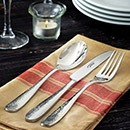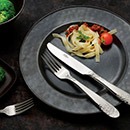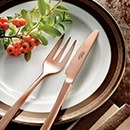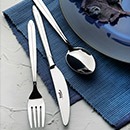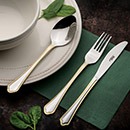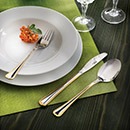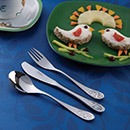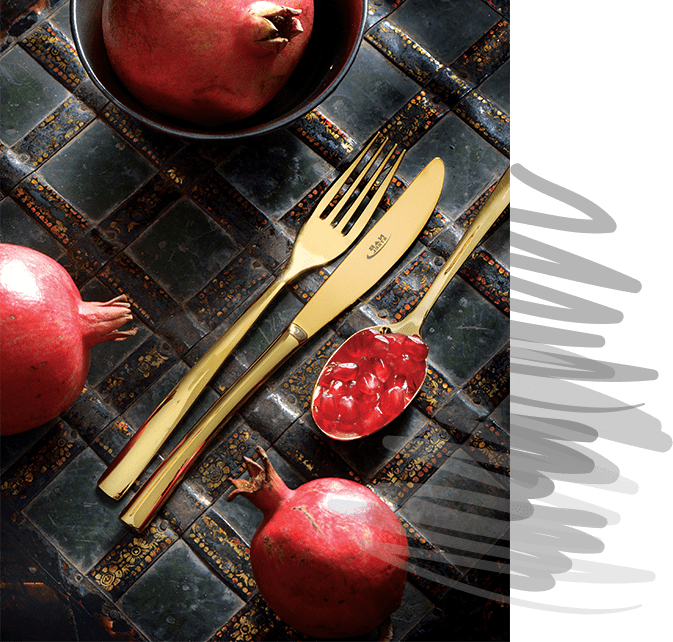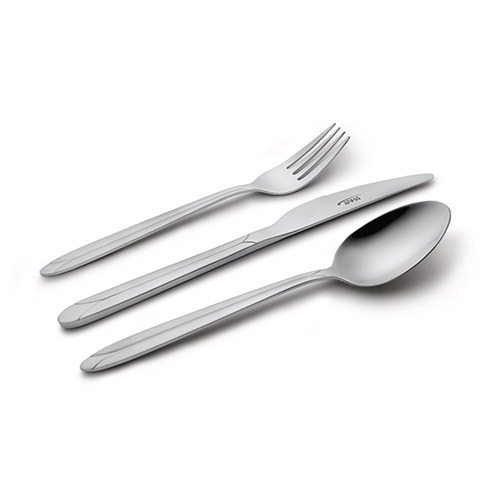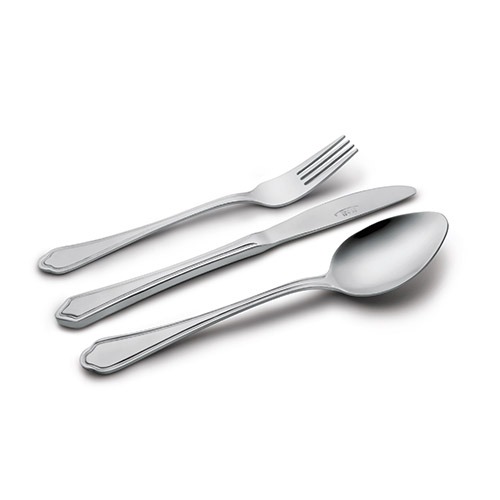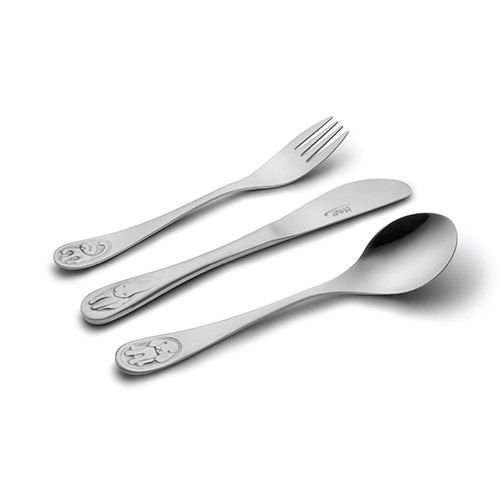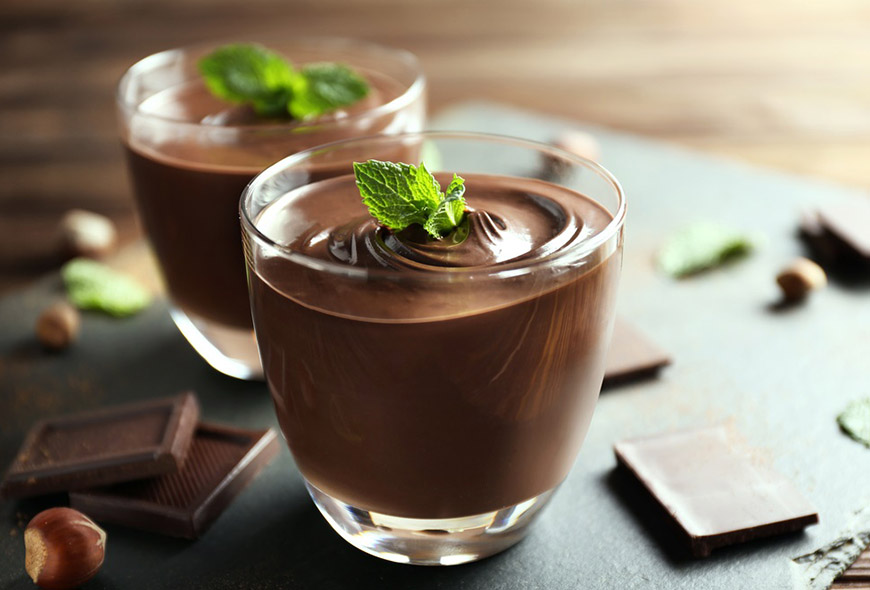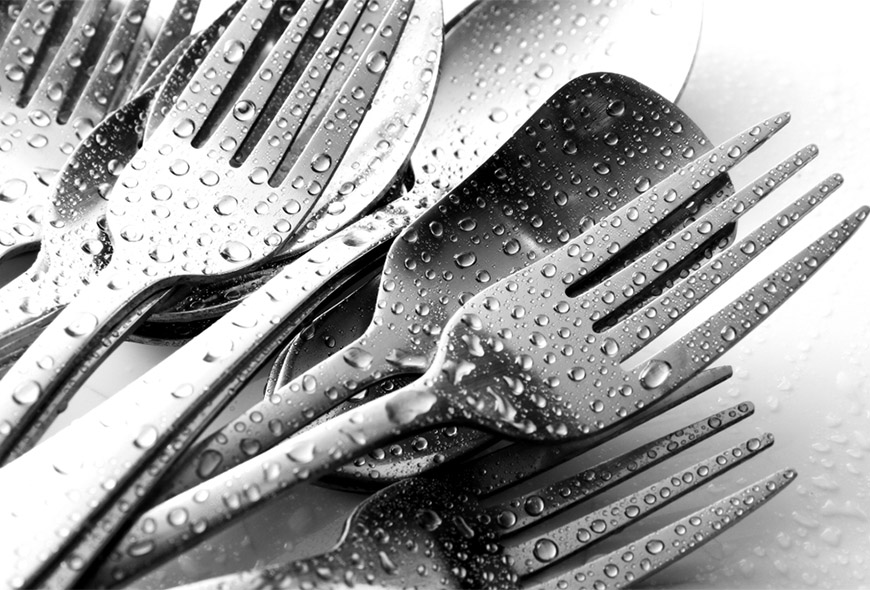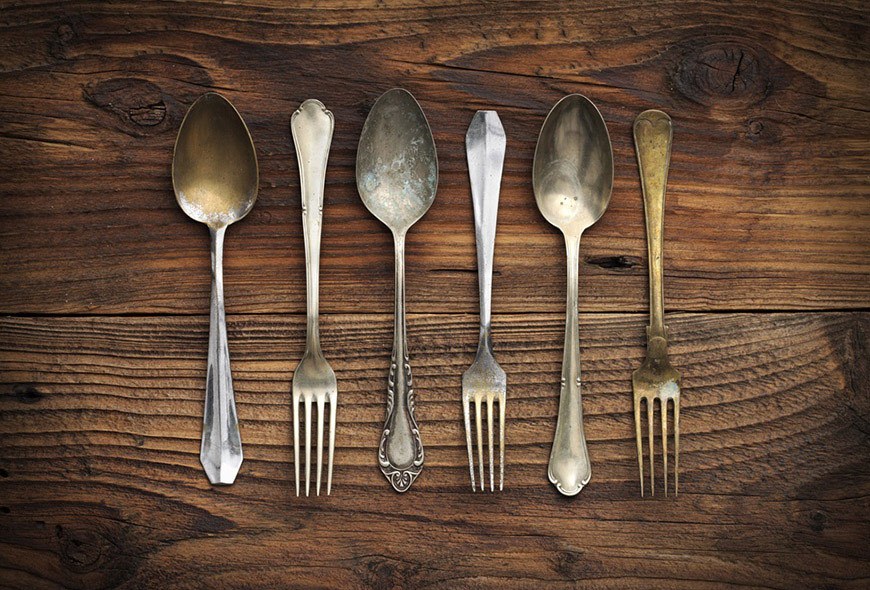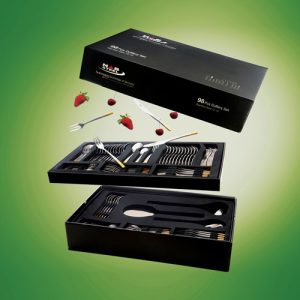About Nabsteel
Nab Steel Company was launched in Mazandaran Province, Iran in 1983 by taking benefit from Solingen Machinery and Technology (Germany). Upon starting up, Nab Steel Factory’s mission has been qualitative and quantitative development of spoon and fork production. Therefore, the company purchased the relevant machines from Switzerland to update the mold making sector.
The art of Nab Steel is to convert pure steel into a beautiful product with suitable ergonomic design. Modernity and originality are two enduring and indispensable elements in our products design which, along with our adherence to and emphasize on the principles of “Lean Production Theory”, resulted in our position as The First Iranian Lean Brand in World Class reflect creditability and prestige for Iranians



Prestige
Unique appearance, high quality and creditability as the results of more than three decades of activity granted high prestige and influence to Nab Steel products.Modernity
Manifestation of beauty and modernity in Nab Steel spoons and forks has made it an ideal choice for modern Iranian families.Originality
Originality is a basis for other Nab Steel values. Protecting brand originality has always been under focus of our company directors.Articles
How to make Swiss pudding
Swiss chocolate pudding is a very tasty, stylish and easy dessert that can be easily prepared at home for various parties and family celebrations. Swiss pudding can shine well on your reception table and surprise your guests. Everyone in different age groups, including children, teenagers and even the elderly, are very interested in eating this dessert. Chocolate desserts always have a special place in the list of people’s favorites and there are few people who can not eat it. Swiss pudding is one of these delicious chocolate desserts that has a unique texture and taste. In addition, the ingredients are always available and with fewer facilities at home, it can easily be prepared in a short time for the family, especially children, as a healthy, nutritious and hearty snack. Follow us to get acquainted with how to prepare this delicious and popular dessert.
How to make Swiss chocolate pudding
Pudding is a type of dessert with a long history. Today’s puddings are made from milk, sugar, and other ingredients, and use ingredients that give it a jelly-like texture, such as gelatin, cornstarch, or egg yolks. Swiss pudding is a creamy and delicate dessert that can be easily made at home. The Swiss use this pudding to entertain their special guests.
Ingredients for making Swiss chocolate pudding:
Coconut milk or skim milk: a glass
(If coconut milk or skim milk is not available, 2 to 3 tablespoons of breakfast cream can be used).
Water: a glass
Sugar or brown sugar: 70 gram
Salt: The tip of a teaspoon
Cocoa powder: 5 tablespoons (you can also use dark chocolate).
Gelatin powder: one tablespoon
Steps of preparing Swiss chocolate pudding:
- First, mix the milk sugar and sugar in a suitable saucepan and put it on a medium heat to heat.
- Then dissolve the cocoa powder in a bowl or bowl with 4 tablespoons of boiling water until smooth.
- Pour the water-dissolved cocoa powder into the milk mixture and stir gently to form a one-handed mixture.
- At this stage, if you wish, you can also add pieces of dark or sweet chocolate to the composition.
- Mix the Latin powder with a little cold water and dissolve it with steam by indirect method (indirect heat).
- Then, add the resulting gelatin to the milk and cocoa mixture. Stir the mixture over direct heat for one to two minutes.
- Finally, lubricate the mold with a little oil. Then pour in the slightly cooled chocolate pudding.
- Put this dessert in the refrigerator for three to four hours to get its fullness. Then take it out of the mold and decorate it with colored truffles and cocoa powder or any other favorite food.
You can also enjoy this wonderful dessert with tea or coffee in coffee shops. We also suggest you read how to prepare pumpkin soup, Rusti and Zapf bread.
Important points for maintaining and washing steel spoons and forks
stainless steel cutlery is the most popular tool in modern gastronomy .Any catering establishment’s cutlery takes a battering. Used relentlessly all day and every day, knives and forks can be washed dozens of times as well as being scraped against plates by customers. This means it’s essential that cutlery is maintained correctly in order to extend its lifespan. Alternatively, read on to learn how to care for cutlery, avoid stains and diagnose any problems you may come across.
Stainless steel cutlery is stain resistant but it may not be completely stain proof. In order to avoid any chemical harm and keep it in the best condition, Sola recommends to rinse or wash cutlery after every use. Any extended contact with salt, vinegar, egg, tomato sauce, acidic fruits, detergents and selected tap water mineral salts may cause pitting and staining.
Ways to extend the life of steel spoons and forks
To extend the life of steel spoons and forks, you can follow the following instructions::
- Rinse with hot water immediately after use to reduce chemical reaction of salts or acids.
- Wash before first use and immediately after each use. Use hot soapy water, and scrub thoroughly with a sponge, scrubby or dish cloth. Once clean, rinse under hot water to remove all of the soap. If left on, the residue can cause dulling over time. Once the soap has been rinsed, use a soft, absorbent towel to dry. If left to air dry, water spots can dry in place, so it won’t look a shiny, or be as clean. When washing after regular use, use a safe and effective detergent or soap, and hot water.
- Do not leave to soak in water overnight as mineral salts may attack the metal surface.
- Store and wash stainless steel and silver cutlery separately.
- Wash knives separately from other cutlery while using dishwasher.
- Place spoon bowls and fork tines in an upward position in dishwasher for the best rinse efficiency.
- Remove cutlery from the dishwasher and dry immediately. Pay extra attention to knife blades.
- Never leave cutlery in a closed, damp dishwasher.
- Always follow the dishwasher and detergent manufacturers’ instructions for use.
Ways to remove stains on steel spoons and forks
Over time, cutlery can become stained or streaky due to constant contact with food, or prolonged exposure to heat. Even with regular cleaning, it will dull over time without polishing. Follow the steps below to attempt removal of stains, or shining of the finish with stuff you already have around your kitchen.
Vinegar:
The acids and cleaning properties of white distilled vinegar can clean and polish stainless steel cutlery. To brighten up dull areas, apply some to a cleaning cloth and rub away dirt and tarnish. Reapply more vinegar, and repeat to really make it shine. Rinse under hot water and dry with towel to finish.
Olive Oil:
Use a cloth with olive oil added to rub out visible streaking. Ensure the fork is clean, then add a small amount of oil to your cleaning cloth. Rub and wipe to remove streaks or make them less visible. Wash, rinse and dry to finish.
Lemon Juice:
A simple application of lemon juice can take out heat stains and streaking. Get a cleaning cloth, and dampen with the juice. Wipe and rub until stain has been removed. Repeat as needed. Once finished, rinse clean and dry thoroughly.
Familiarize yourself with the full service of spoons and forks and the use of each, as well as how to lighten old spoons and forks. If the complete cleanliness of kitchen utensils is important to you, we suggest that you also read the best way to clean the glass stove plate.
How to lighten old spoons and forks.
Stainless steel cutlery is the most practical, because they do not rust (very rarely), they blacken and oxidize much less than nickel silver or silver. Stainless steel cutlery, as its name might suggest, is a special kind of metal that doesn’t easily break down, rust, or stain. However, with use or over time, your stainless steel utensils will likely become dirty and tarnished, losing their shine and clean appearance. But nevertheless, over time, and they fade, they may appear black, greasy, tea or limescale. Untidy spoons and forks can spoil the impression of even the most beautiful dinner.
To clean your cutlery you might have to use manual methods to break up stubborn stains and buildup. After that, with a little extra effort, you can bring out a like-new shine in your utensils.
The first method combines baking soda and liquid soap
- Create your cleaning solution. In a small saucer, dish, bowl, or container, mix baking soda and liquid dish soap until the two form a paste. This combination is excellent for breaking up tough dirtiness and difficult stains. A little bit goes a long way, and you can always mix more, so you may want to prepare a small amount first to prevent any going to waste. Use your finger or a stirring tool, like a spoon, to thoroughly mix the baking soda and soap until the paste is consistent throughout.[1]
- Apply the cleaning paste to your cutlery. You may want to clean your cutlery one at a time to ensure nothing is missed, or you may want to do all of it at once to save time. Gently scrub your paste into dirty areas with a nylon scrubber or a soft bristle brush to break up gunk and dirtiness. If you’re trying to save time by cleaning your cutlery in a large batch, you may want to use a tub or bucket to hold silverware and contain your cleaning paste. Using this special cleaning paste is especially useful for removing scorch marks and dark spots from your cutlery.
- Rinse your cutlery under water and then use a soft, dry dishcloth to wipe away excess moisture, as hand drying will help prevent the formation of spots. If, over the course of your drying, your towel has become especially wet, swap this out with a new one that’s clean and dry.
The second method using Toothpaste or Baking Soda Paste
- Choose your preferred cleaning agent. For this method, you can use either toothpaste or a mixture of baking soda and water. Both should give you great results in a short amount of time. If you use baking soda, combine three parts baking soda and one part water to create a paste. You want a consistency that is similar to that of toothpaste. If it is too thin, add more baking soda. If it is too dry, add more water.
- Scrub your silverware with the paste. Apply a dab of your chosen cleaning paste to a soft cloth. Then use it to scrub each piece of silver. Be sure to scrub all areas of your silverware equally to achieve have a nice, even finish. If this method does not seem to be working, try allowing the paste to sit on the silverware for several minutes before you begin scrubbing again.
- Rinse and buff your silverware. Once your silver is satisfactorily clean, rinse all remnants of baking soda or toothpaste off with warm water. Then buff each piece of silver with a clean, dry cloth.
The third method is to wash the spoon and fork with soda
Cola, Fanta, Sprite and other carbonated drinks contain citric acid in their composition, so they do an excellent job with cleaning the devices. And although this method is not the most economical, but sometimes it can be useful (for example, if it is a pity to throw out a drink in which there are no more gases). In addition, it is interesting to test it just for the sake of experiment. Simply soak the devices in a container filled with soda for a few minutes, then rinse and dry quickly. It is better to use colorless soda, for example, Sprite.
Familiarize yourself with the full service of spoons and forks and the use of each, as well as Important points for maintaining and washing steel spoons and forks. If the complete cleanliness of kitchen utensils is important to you, we suggest that you also read the best way to clean the glass stove plate.

